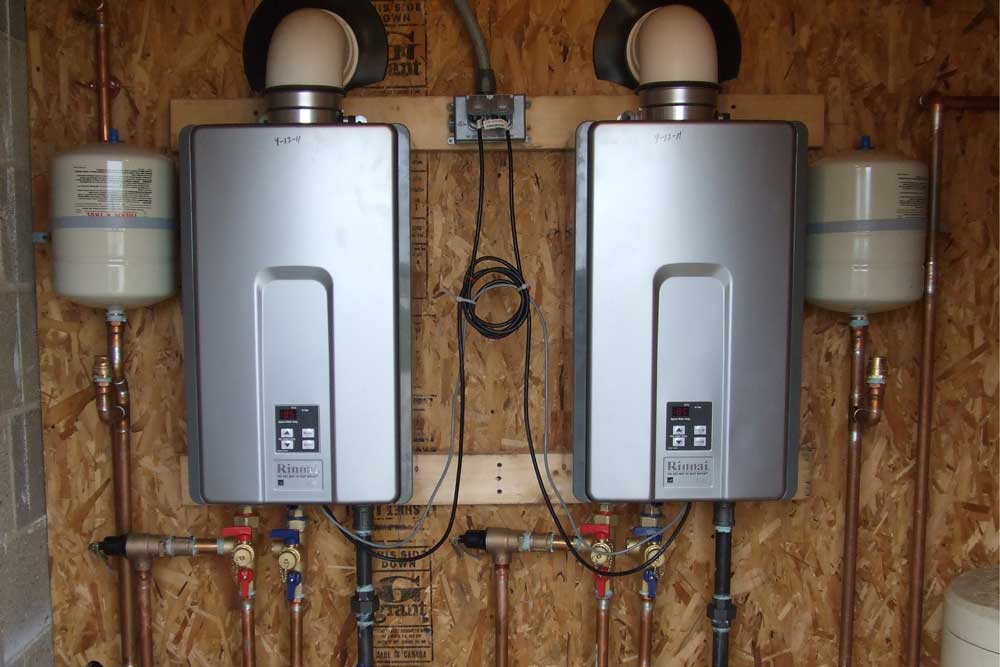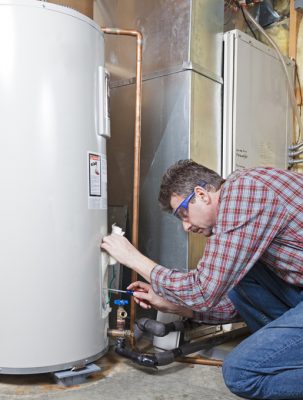Essential Guidance on Caring for Your Home's Hot Water SystemBest Practices for Caring for Your Home's Hot Water SystemWhat to Maintain Your Home's Hot Water System Effectively
Essential Guidance on Caring for Your Home's Hot Water SystemBest Practices for Caring for Your Home's Hot Water SystemWhat to Maintain Your Home's Hot Water System Effectively
Blog Article
We have uncovered this great article about What Kind of Maintenance Do Water Heaters Need? listed below on the internet and believe it made sense to talk about it with you here.

Hot water is vital for daily convenience, whether it's for a rejuvenating shower or cleaning dishes. To guarantee your hot water system runs successfully and lasts longer, routine maintenance is vital. This post provides useful tips and understandings on just how to keep your home's warm water system to stay clear of disturbances and costly fixings.
Introduction
Keeping your home's hot water system might appear daunting, but with a couple of basic actions, you can ensure it runs efficiently for several years to come. This guide covers everything from recognizing your warm water system to DIY maintenance suggestions and knowing when to call professional help.
Significance of Keeping Your Hot Water System
Routine upkeep not only prolongs the lifespan of your warm water system but additionally ensures it operates effectively. Ignoring maintenance can lead to decreased efficiency, greater power costs, and also early failure of the system.
Indicators Your Hot Water System Requirements Upkeep
Understanding when your hot water system requires focus can stop significant concerns. Keep an eye out for indications such as inconsistent water temperature level, unusual noises from the heating system, or rustic water.
Recognizing Your Hot Water System
Prior to diving right into upkeep jobs, it's helpful to understand the fundamental components of your warm water system. Commonly, this includes the water heater itself, pipes, anode poles, and temperature controls.
Regular Monthly Maintenance Tasks
Regular monthly checks can assist capture small issues before they escalate.
Purging the Hot Water Heater
Purging your hot water heater eliminates sediment accumulation, improving efficiency and lengthening its life.
Monitoring and Replacing Anode Rods
Anode poles prevent corrosion inside the tank. Checking and replacing them when broken is critical.
Examining and Adjusting Temperature Level Settings
Readjusting the temperature settings ensures optimal performance and safety and security.
DIY Tips for Upkeep
You can execute numerous maintenance tasks on your own to keep your hot water system in top problem.
Looking for Leakages
On a regular basis examine pipes and links for leakages, as these can result in water damages and greater expenses.
Evaluating Stress Relief Valves
Checking the stress safety valve ensures it operates properly and protects against too much stress buildup.
Protecting Pipelines
Insulating hot water pipes reduces warmth loss and can save power.
When to Call an Expert
While do it yourself upkeep is advantageous, some concerns need expert proficiency.
Facility Concerns Needing Expert Assistance
Instances include significant leaks, electrical troubles, or if your hot water heater is continually underperforming.
Regular Professional Upkeep Conveniences
Expert upkeep can consist of comprehensive inspections, tune-ups, and making sure compliance with safety requirements.
Final thought
Routine upkeep of your home's warm water system is vital for effectiveness, long life, and cost savings. By complying with these ideas and knowing when to seek professional assistance, you can ensure a trusted supply of hot water without unanticipated disturbances.
Water Heater Maintenance: The Basics
Maintaining your water heater will ensure it operates efficiently and has a longer lifespan. Neglecting regular maintenance can lead to costly repairs and an even bigger chunk of your savings if you have to replace it sooner than necessary. But there’s good news: Most water heater maintenance tasks are relatively simple and easy for homeowners with basic DIY skills.
Flush the Water Heater
Over time, sediment and minerals can build up in the tank, reducing its efficiency and potentially causing damage. To flush the tank, turn off the power or gas supply, attach a hose to the drain valve near the bottom and open the valve to drain the water until it runs clear. Ideally, flush the tank annually.
Replace the Anode Rod
The anode rod is a sacrificial metal rod that helps prevent corrosion inside the tank. Inspect and replace it every three to five years or per the manufacturer's recommendation. To replace the anode rod, turn off the power or gas supply, drain a few gallons of water from the tank, unscrew the old rod and replace it with a new one. If the anode rod is significantly corroded or covered in calcium buildup, it's a sign the water heater may need to be replaced soon.
Tune-Up
A yearly tune-up can help identify potential issues and ensure your water heater operates at peak efficiency. This typically involves checking the thermostat, burner assembly (for gas heaters) and any other components specified by the manufacturer. During a tune-up, the technician may also clean the burner and adjust the pilot light (for gas heaters) or examine the heating elements (for electric heaters).
How to Maintain Your Water Heater
Insulate the tank. Insulating the tank can improve energy efficiency and reduce heat loss, saving you money on energy bills. You can purchase precut insulation blankets designed specifically for water heaters or use standard fiberglass insulation wrapped securely around the tank. Check the temperature. The recommended water temperature for most households is around 120 degrees Fahrenheit (49 degrees Celsius). Higher temperatures can increase energy costs and potentially cause scalding. Use a kitchen thermometer to check the temperature at the faucet nearest the water heater. Monitor water pressure. Excessive water pressure can strain the water heater and cause leaks or even tank failure. Install a pressure-reducing valve if necessary. The ideal water pressure range is between 60 and 70 PSI (pounds per square inch). Test the temperature and pressure (T&P) relief valve. The T&P relief valve is a safety feature that releases pressure if the tank gets too hot or the pressure builds up too high. Test it annually by lifting the lever and allowing a small amount of water to release. Replace the valve if it doesn't release water or reseal properly. Check for leaks. Regularly inspect the tank, pipes and fittings for leaks or corrosion. Deal with issues promptly to prevent further damage. Even a small leak can lead to significant water damage over time. Consider a tankless water heater. If your traditional tank-style water heater is nearing the end of its lifespan ( typically 10 years), consider replacing it with a tankless water heater. These units heat water on demand, reducing standby energy losses and potentially saving you money on your energy bills. Schedule professional maintenance. While homeowners can perform many water heater maintenance tasks, it's still a good idea to schedule professional maintenance every few years. A plumber or HVAC technician can thoroughly inspect the unit, identify potential issues and ensure it operates safely and efficiently. https://www.homeserve.com/en-us/blog/home-improvement/hot-water-heater-maintanence/

As a serious person who reads about How to Maintain a Hot Water Heater in a Few Simple Steps, I thought sharing that excerpt was a smart idea. Sharing is caring. Helping others is fun. I recognize the value of your readership.
Schedule Service Report this page